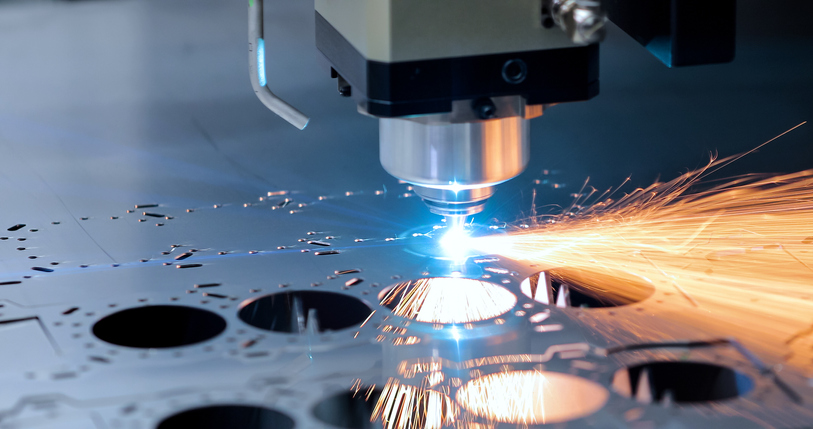Why the Buyer-Centric Smart Factory Is the Future of Complex Manufacturing
Manufacturers face growing pressure to deliver highly configurable solutions on shorter timelines while protecting margins. The buyer-centric smart factory is the answer to delivering on your customer promise, profitably.

Manufacturers of configurable products have the unique challenge of selling complex solutions amid growing demand to compress delivery timelines without losing margin. While the traditional factory is either built around mass standardization and high internal efficiency, or high customization with unpredictable delivery, the buyer-centric smart factory is where manufacturers will be able to achieve both customer satisfaction and efficiency. That means delivering on unique promises to their customers in a smarter, faster way.
Tomorrow’s manufacturers must go from fragmented, reactive, and unsure, to unified functions, proactive data, and predictable business outcomes. The buyer-centric smart factory starts by meaningfully connecting the end-to-end process through a single source of truth.
The challenging disconnects in today’s manufacturing model
Today, manufacturing suffers from a disconnect. Buyer engagement happens in e-commerce sites or in conversations with sales teams who may be unclear if a solution is truly configurable. Engineering and product teams are checking for errors and handholding for quote accuracy. Order fulfillment is adjusting and re-forecasting supply chain needs.
At each step, and with each competing priority, comes risk to profitability.
This disconnect also shows up in what buyers experience: before purchase, they expect convenience and transparency, but once the order is placed, they demand reliability, quality, and predictable lead times. Manufacturers struggling with silos can rarely deliver both, and they often sacrifice margin or trust in the process.
What is the buyer-centric smart factory?
In the buyer-centric smart factory, the entire value chain works from the same source of truth.
In an ideal setup, engineering centralizes rules for valid configurations, ensuring consistent product logic across PLM, ERP, and CPQ. Updates flow automatically to sales, preventing errors and protecting margins, while fulfillment receives automated BOMs, flexible scheduling, and order change management. The result is a seamless value chain where profitability is safeguarded end to end, reducing rework and avoiding costly delays that impact margin.
Defining ‘buyer-centric’ and ‘smart factory’
When broken down, what makes up the buyer-centric smart factory?
Buyer-centric engagement is where manufacturers are currently differentiating for today’s digital-first customers through:
- outcome-based configuration
- full solutions (i.e., both products and services)
- optimized pricing
- visualized buying
- automated compliance
These experiences both fuel and are fueled by shared smart factory data, which includes data from digital twins, PLM, quote and order fulfillment, and supply forecasting.
However, the buyer-centric smart factory adds two layers that make the connection truly work:
- AI to codify knowledge: Capturing engineering expertise and rules so sales can configure an optimized solution accurately and independently, while ensuring compliance and feasibility in real time.
- Analytics for optimization: Using data across sales, engineering, and fulfillment to forecast demand, protect margins, and continually improve the buyer experience, product portfolios, and operational performance.
With a single source of truth, buyer demands flow directly into design, pricing (both products and services), and production. Customization is validated in real time—compliance checks, margin optimization—before an order hits the shop floor. And at every step, data and AI intelligence helps optimize the process.
One source of truth leads to stronger business outcomes
When organized effectively, a buyer-centric smart factory creates a seamless connection across the value chain. Sales can confidently deliver validated quotes and orders to fulfillment, while engineering can introduce and launch new products without delays to sales and order fulfillment. The result for the buyer is faster access to innovative products, with greater reliability and confidence in every purchase.
The benefits extend across the entire organization:
- It’s easier for sales to sell complex products by codifying engineering knowledge and using that to guide selling.
- Codified product knowledge and AI make it easier to create the best possible solution for customers to increase win rates.
- Engineering has more time to innovate due to detailed and technically validated quotes.
- Order fulfillment has more reliability in forecasting and supply chain management and is able to deliver production excellence.
- Analytics and planning tools help manufacturers adapt to shifting demand without sacrificing margins.
The key to achieving a buyer-centric smart factory
For many manufacturers, achieving this level of efficiency requires breaking deep-rooted barriers between sales, engineering, and fulfillment through adjustments in people, process, and technology.
Map workflows
It starts with mapping workflows and data to gather the necessary information from each of your systems. With the help of generative and symbolic AI, manufacturers can then determine what can and cannot be delivered based on that data.
Create a seamless flow between Bill of Materials (BOMs)
In a buyer-centric smart factory, one of the most important workflows to automate is the transition from engineering design to manufacturing execution, specifically from the engineering bill of materials (eBOM) to the manufacturing bill of materials (mBOM). When the full 150% eBOM (representing all possible product variants) is digitized, each customer configuration can automatically generate a precise 100% eBOM that reflects the product exactly as sold. From there, a seamless connection between the quote and order fulfillment processes transforms that configuration into a production-ready mBOM, complete with the correct parts, routings, and work instructions for each factory’s supply chain and production setup. Achieving this level of automation requires a single source of truth that connects sales, engineering, and manufacturing.
Prepare cross-functional teams
But technology alone won’t solve the ‘people’ issue: resistance to change. Teams often cling to familiar processes, but cultural change is just as important as system change. Leadership and teams must reframe priorities so that sales, engineering, and fulfillment are not competing, but rather working toward the same customer outcomes.
While it’s tempting to tackle challenges separately—pricing today, fulfillment tomorrow—priorities should be addressed together. When data, AI, and analytics are integrated on one platform, manufacturers can connect the front end with reliable fulfillment on the back end. Then, efficiency, profitability, and customer satisfaction stop being trade-offs and start reinforcing each other.
Vision to reality with Tacton
Moving from vision to reality requires the right platform to connect these moving parts in a data-driven way.
Recognized as a leader in CPQ, Tacton is much more than CPQ. We provide an end-to-end manufacturing lifecycle platform that connects buyer engagement with the smart factory through a single source of truth.
CPQ remains a critical link, ensuring every configuration, price, and quote is validated and optimized. Through seamless integration with ERP, PLM, CLM, and other core systems, manufacturers can unify the value chain, streamline order fulfillment, and gain the data needed to innovate with confidence.



